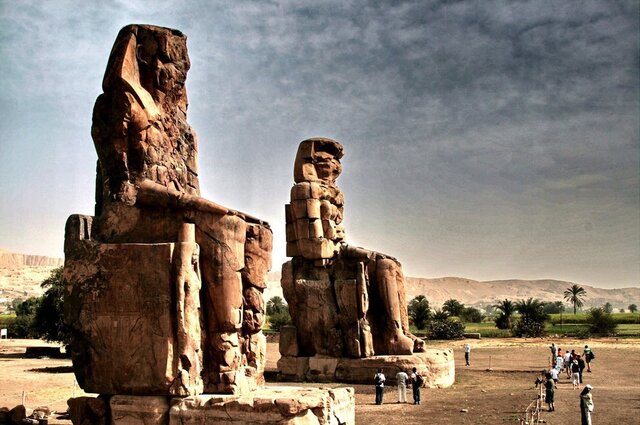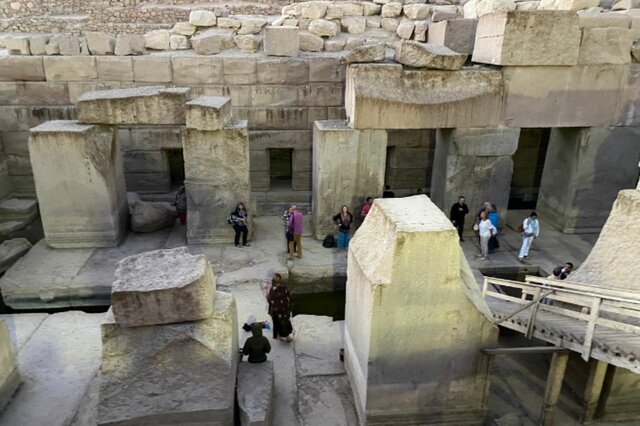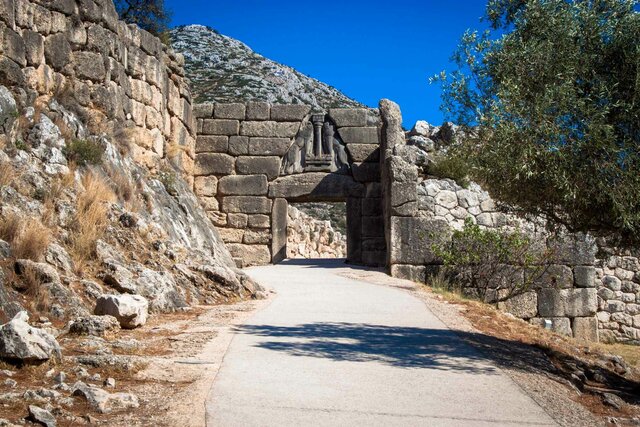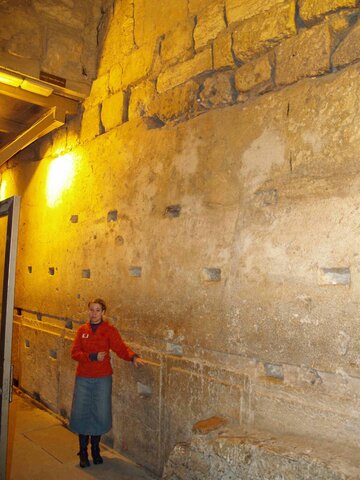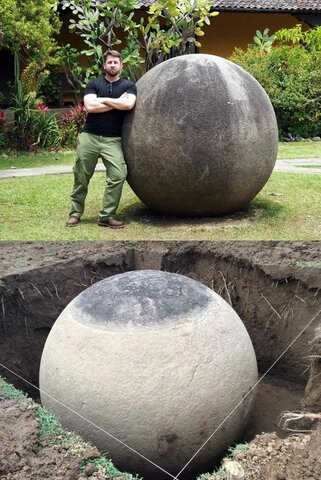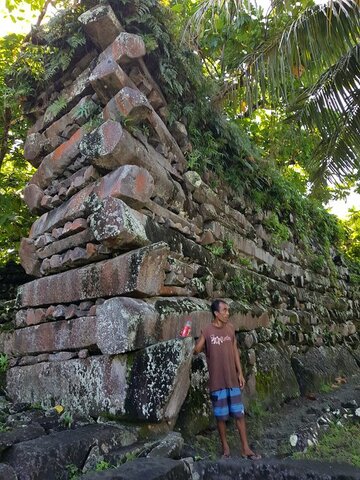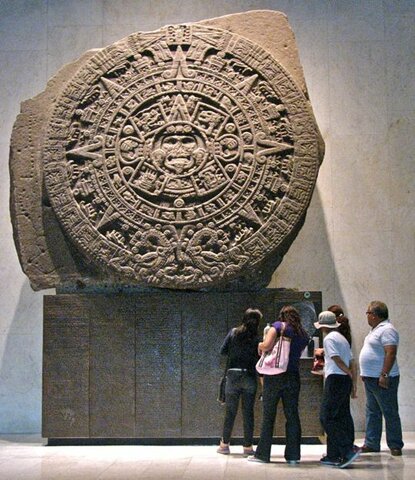-
 Wiki
Wiki
Video Göbekli Tepe (Turkish: "Potbelly Hill") is a site in Turkey. Dated to 9500 and 8000 BCE, the site has the world's oldest known megaliths. Beginning at the end of the last Ice Age, this may be the earliest evidence for permanent human settlements in the world. The largest pillar has a length of 7 m (23 ft) and its head has width of 3 m (10 ft). Its weight is around 50 tons. -
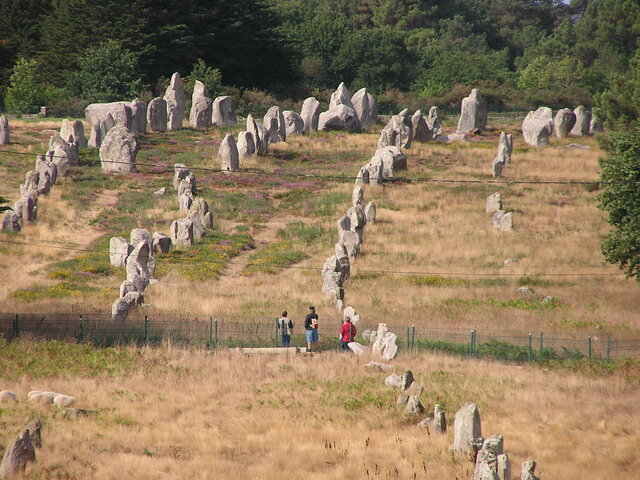 Wiki
Wiki
Video The Carnac stones are an exceptionally dense collection of megalithic sites in France, consisting of alignments (rows), dolmens (stone tombs), tumuli (burial mounds) and single menhirs (standing stones). More than 3,000 prehistoric standing stones were cut from local granite, erected by pre-Celtic people of Brittany, and form the largest collection in the world. The largest weigh 380 tons. -
 Wiki
Wiki
Video The Dolmen of Menga is a megalithic burial mound called a tumulus, a long barrow form of dolmen, dating from the 3750-3650 BCE in Spain. The structure is 27.5 metres (90 ft) long, 6 metres (20 ft) wide and 3.5 metres (11 ft) high, and was built with thirty-two megaliths, the largest weighing about 180 tonnes (200 tons). -
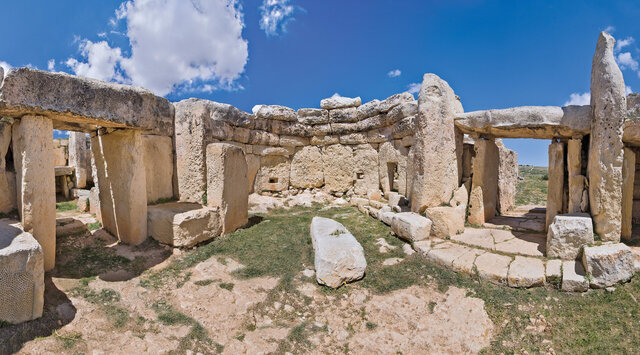 Wiki
Wiki
Video The Megalithic Temples of Malta are several prehistoric temples built during three distinct periods approximately between 3600 BC and 2500 BC on the island country of Malta. This site had the oldest free-standing structures on earth, until the discovery of Gobekli Tepe. Some of the stones here weigh as large as 20 tons. -
 Wiki
Wiki
Video Newgrange, located in Ireland is an exceptionally grand passage tomb built during the Neolithic Period, around 3200 BC, making it older than Stonehenge and the Egyptian pyramids. It is aligned on the winter solstice sunrise. Some of the largest stones inside can weigh as large as 5 tons (10 feet tall and 4 feet wide); however, these are the smallest sizes in comparison to the other structures. -
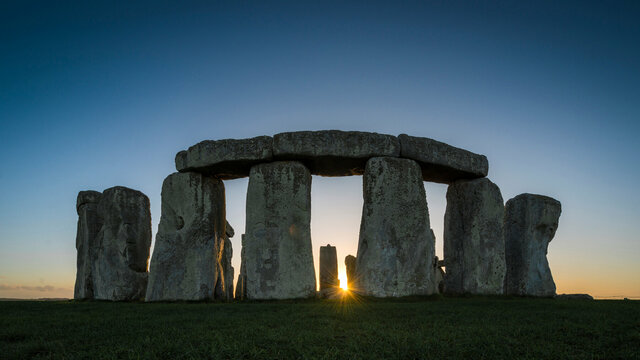 Wiki
Wiki
360Video Stonehenge is a prehistoric monument on Salisbury Plain in Wiltshire, England. Archaeologists believe that Stonehenge was constructed from 3000 BC to 2000 BC. The structure consists of an outer ring of vertical standing stones, each around 13 feet (4.0 m) high, seven feet (2.1 m) wide, and weighing around 25 tons, topped by connecting horizontal stones. -
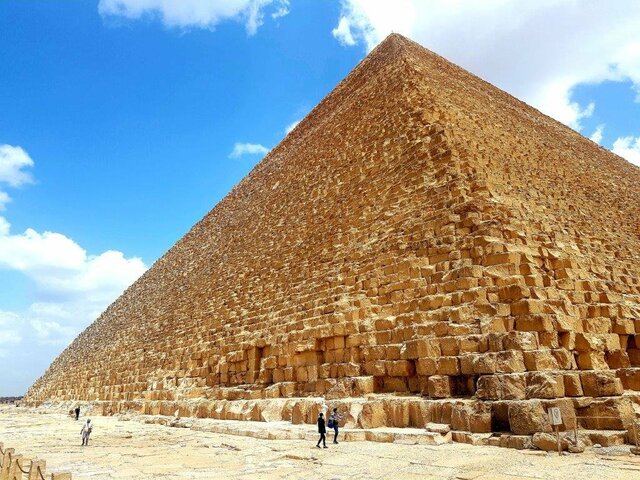 Wiki
Wiki
Video
360Video The Great Pyramid of Giza is the largest Egyptian pyramid and tomb of Fourth Dynasty pharaoh Khufu. Built in the 26th century BC during a period of around 27 years, it is the oldest of the Seven Wonders of the Ancient World, and the only one to remain largely intact. The largest blocks were estimated to weigh 90 tons. -
 Wiki
Wiki
Video The unfinished obelisk is the largest known ancient obelisk, nearly one-third larger than any ancient Egyptian obelisk ever erected, and is located in Aswan, Egypt. If finished it would have measured around 41.75 meters (137.0 ft) and would have weighed nearly 1,090 tonnes (1,200 tons), a weight equal to about 200 African elephants. -
 Wiki
Wiki
Video The Olmecs were the earliest known major Mesoamerican civilization. The heads were said to be depictions of various rulers. The heads range in size from the Rancho La Cobata head, at 3.4 m (11 ft) high, to the pair at Tres Zapotes, at 1.47 m (4 ft 10 in). The largest heads weigh between 25 and 55 tonnes (28 and 61 tons). The heads were carved from single blocks or boulders of volcanic basalt. -
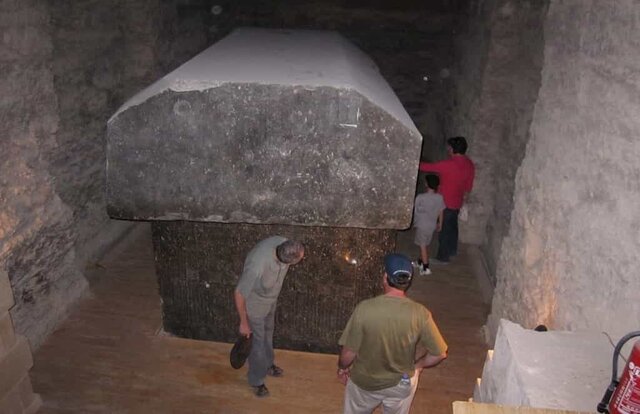 Wiki
Wiki
Video The Serapeum of Saqqara was the ancient Egyptian burial place for sacred bulls of the Apis cult at Memphis. It was believed that the bulls were incarnations of the god Ptah, which would become immortal after death as Osiris-Apis. one of the large sarcophagi of the Greater Vaults are estimated to have a total mass of 70-100 tons including the lid. -
-
-
 Wiki
Wiki
Video Moai (meaning "statue" in Rapa Nui) are monolithic human figures carved by the Rapa Nui people on Easter Island in eastern Polynesia. The heaviest moai erected was a shorter but squatter moai at Ahu Tongariki, weighing 86 tonnes (84.6 tons). One unfinished sculpture, if completed, would have been approximately 21 m (69 ft) tall, with a weight of about 145–165 tons. -
-
-
-
 Wiki
Wiki
Video The Baalbek Stones are six massive stone blocks in Baalbek, Lebanon. The smallest three are part of the Temple of Jupiter and known as the "Trilithon". Each is estimated at about 750–800 tonnes (830–880 tons). The largest is 1200 tons. Although the site is considered Roman and year 2000+ , there are speculations the site is older and the Romans built on top of the Trilithon stones. -
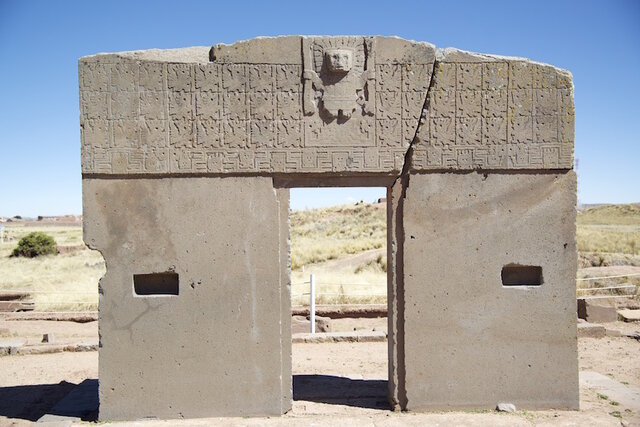 Wiki
Wiki
Video Tiwanaku is a Pre-Columbian site in Bolivia, and is one of the largest sites in South America. The site's population probably peaked around AD 800 with 10,000 to 20,000 people. The largest stone block made of andesite, is estimated to weigh 65.7 tons. From 1910 to 1945, Arthur Posnansky maintained that the site was 11,000–17,000 years old, but the current date is stated as 110. -
-
-
 Wiki
Wiki
Video Puma Punku (meaning Gate of the Puma) is a 6th-century T-shaped and strategically aligned man-made terraced platform that is part of the Pumapunku complex, at the Tiwanaku Site near Tiwanacu, Bolivia. The largest of Puma Punku's stone blocks is 7.81 metres (25.6 feet) long, 5.17 metres (17.0 feet) wide, 1.07 metres (3 feet 6 inches) thick, and is estimated to weigh 131 tonnes (144 short tons). -
 Sacsayhuaman
Sacsayhuaman
Video Sacsayhuamán, (possibly from Quechua language, "falcon" or "hawk") is a citadel on the northern outskirts of the city of Cusco, Peru, the historic capital of the Inca Empire. Estimates for the weight of the largest andesite block vary from 128 tonnes to almost 200 tonnes. -
-
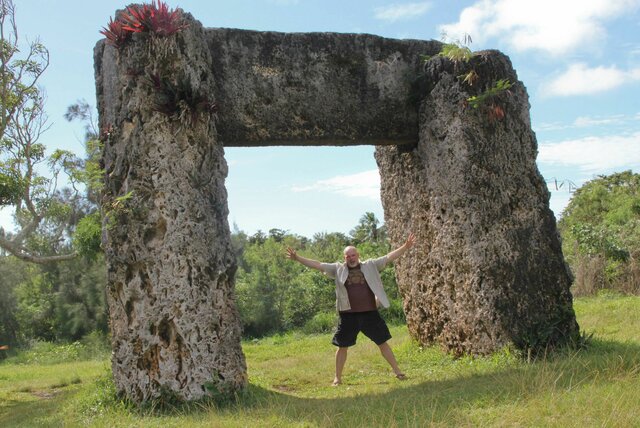 Wiki
Wiki
Video Haʻamonga ʻa Maui ("The Burden of Maui") is a stone trilithon located in Tonga. It was built in the 13th century by King Tuʻitātui in honor of his two sons. The monument is sometimes called the "Stonehenge of the Pacific". The trilithon is constructed from three coral limestone slabs. The weight of the visible part of each upright stone is approximately 30–40 tons. -
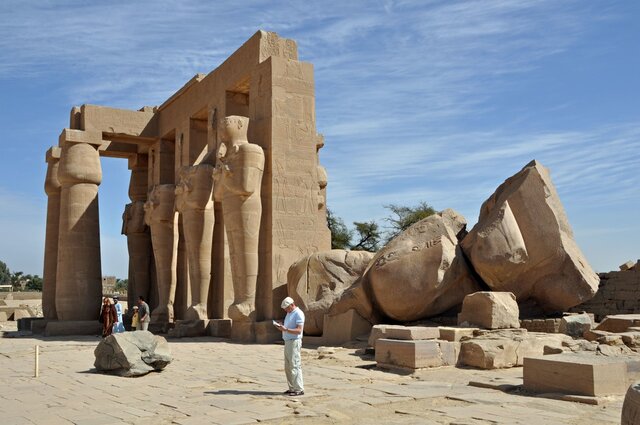 Wiki
Wiki
Video The Ramesseum is the memorial temple of Pharaoh Ramesses II. In the image, the blocks behind and to the right of the guy in the picture are the remnants of the statue of Ramesses (the base and torso). The statue of Ramesses was estimated to weigh over 1000 tons, be a single piece of stone, and was alleged to have been transported 170 miles (270 km) over land. -
 Wiki
Wiki
Video The twelve-angled stone is an archeological artifact in Cuzco, Peru. It was part of a stone wall of an Inca palace, and is considered to be a national heritage object. The stone is currently part of a wall of the palace of the Archbishop of Cuzco. The stone is estimated to weigh about 6 tons. -
 Wiki
Wiki
Video Machu Picchu is a 15th-century Inca citadel located in the Eastern Cordillera of southern Peru on a 2,430-meter (7,970 ft) mountain ridge. Although officially the Incas were credited with creating Machu Picchu, there are some speculations that the Incas built structures on top of existing structures from a previous civilization. Some of the stones weighed over 55 tons. -
-

